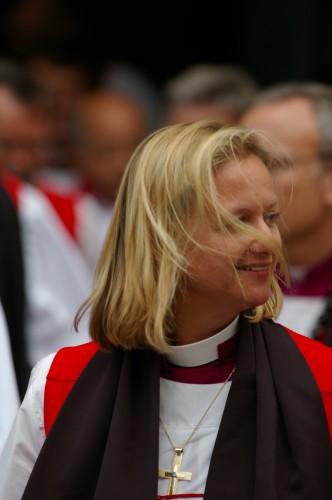 The Vatican Insider section of La Stampa reports that there are now more women priests than men priests in the Church of England. This report in Italy's largest circulation newspaper has been picked up by Catholic newspapers and blogs round the world. It has morphed into reports like that in CathNews New Zealand which states: "A first: Anglican women priests outnumber men in UK."
The trouble is -- the underlying claim is false.
The Vatican Insider section of La Stampa reports that there are now more women priests than men priests in the Church of England. This report in Italy's largest circulation newspaper has been picked up by Catholic newspapers and blogs round the world. It has morphed into reports like that in CathNews New Zealand which states: "A first: Anglican women priests outnumber men in UK."
The trouble is -- the underlying claim is false.
However this surface error aside, the La Stampa article offers a very fine summary of the theological and historical issues at play -- and reports that in the view of one Italian church historian, there were women priests and bishops in the early Catholic Church.
The La Stampa story entitled "Women outnumber men in the Anglican Church for the first time" begins:
There is a female majority for the first time in the Church of England, with more women priests joining than men. This certainly bodes well for a final “yes” vote in next July’s Synod that would allow women into the Episcopate. “Official figures show that 290 women were ordained in 2010, the most recent year for which figures are available,” says British newspaper The Telegraph. “By contrast, just 273 men entered the priesthood.”
Yes, I would say that there is a female majority among those in the pews in the Church of England -- but I expect that this has been the case for several hundred years.
And yes, La Stampa accurately quotes news from the Telegraph that in 2009, 290 women were ordained as against 273 men. But the ordination of 17 more women than men in 2009 does not mean that a majority of priests are now women. The headline of the Telegraph article from 4 February 2012 could be misconstrued by someone for whom English is not their first language: "More new women priests than men for first time."
But in the body of the article there is the statement that should remove any ambiguity:
Overall there were still more than twice as many ordained men (8,087) as women (3,535) in 2010.
In 2009 I ran a story in The Church of England Newspaper that reported that as of 2007 the number of women clergy who were incumbents -- e.g., who actually were in charge of a congregation -- was 15 per cent of the total number of clergy. And, in 2007 the Associated Press ran a story that reported in 2006 the Church of England added 213 women and 210 men to the priesthood. So, the claim of more women than men in total is untrue, as is the claim that 2010 was the first year that the number of female ordinands exceeded the number of male ordinands.
Putting to one side this confusion of language, the article does offer a look at this issue from a Catholic perspective. The official church position, as summarized by Giorgio Otranto, Professor of Ancient Christian History in the University of Bari is:
Thus the Magisterium returned to the traditional theories that lie behind their opposition to the ordination of women: Christ did not choose any women to join the group of 12 apostles and the entire Church tradition has remained faithful to this fact, interpreting it as the Saviour’s explicit wish for men only to receive the priestly powers of governance, teaching and sanctifying. Only man, through his natural resemblance to Christ, can embody, sacramentally, the role of Christ himself in the Eucharist.
However, Prof. Otranto noted that the historical record shows that women had been ordained in the Catholic Church.
In a letter sent in 494 to bishops of certain regions of Southern Italy ... Pope Gelasius I (492-496) stated he was highly displeased to hear that the contempt towards religion was such that women were being allowed to “sacris altaribus ministrare” and that they were carrying out tasks reserved for males, which did not fall under their competence.”
In Southern Italy, women had received the Sacrament of the Order of bishops, a decision which Gelasius I had firmly condemned. ... “Even outside heretical contexts, ancient Christianity seems to have sometimes elevated women to the rank of priest solely and exclusively due to certain prerogatives within the Holy Order, Otranto pointed out.
I find this fascinating. What I also find fascinating is how an unclear lede about the sexes of new Church of England priests morphed into reports about the entire Church of England priesthood. And then was used as a symbol of Church of England's incipient collapse by some caustic commentators.
What is the moral of the story? Read past the headline? What say you?
